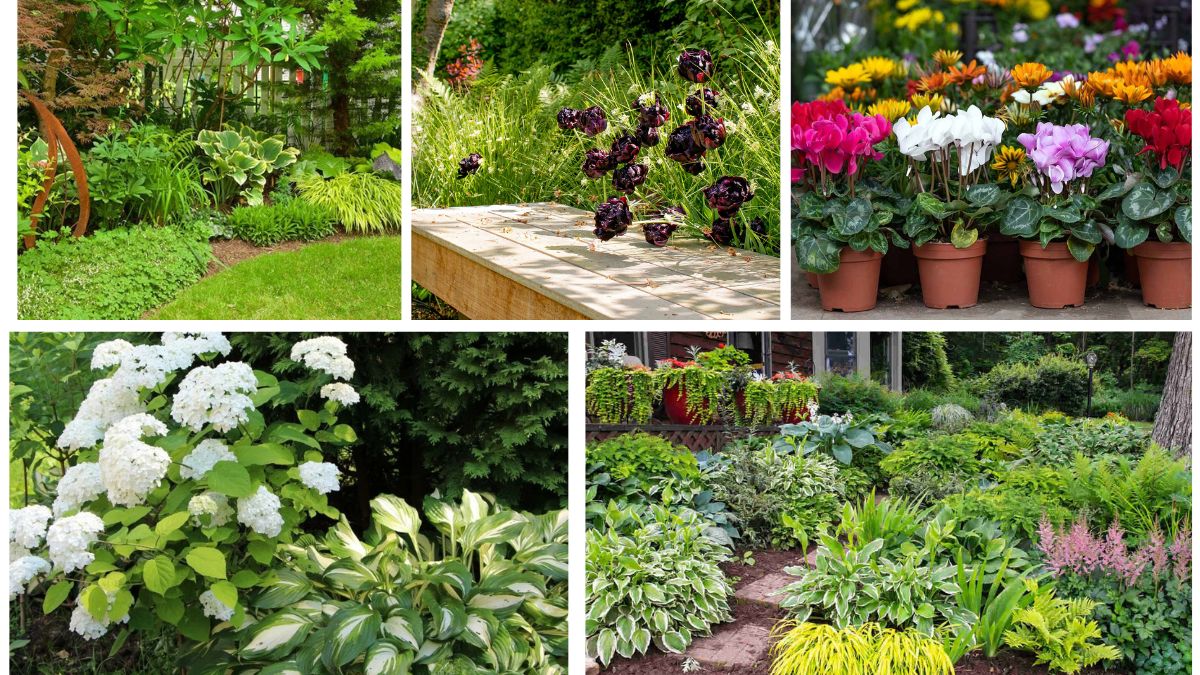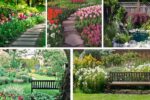Shady corners in gardens often feel like lost opportunities—places where plants struggle, and homeowners resort to plain mulch or bare soil. But here’s the good news: shade doesn’t have to mean dullness. With the right perennials, you can transform those dim, overlooked spaces into vibrant, lively pockets of color and texture. Perennials are especially rewarding because they return year after year, growing stronger with time and requiring less maintenance than annuals.
In this guide, we’ll explore five shade-friendly perennials that thrive in low-light conditions and bring a refreshing charm to gloomy corners of your garden. You’ll also learn practical care tips, planting techniques, and design ideas to maximize their beauty.
Why Choose Shade-Friendly Perennials?
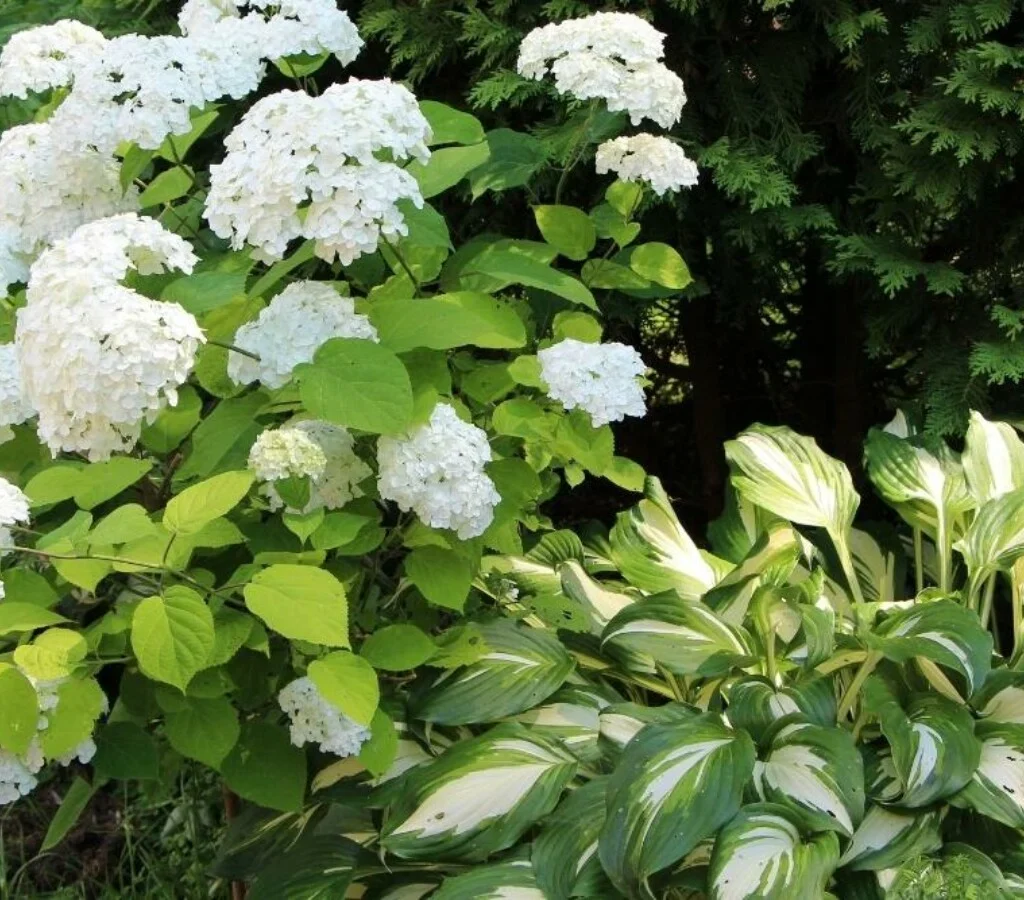
Before we dive into the specific plants, it’s important to understand why perennials are the best choice for shaded areas:
- Low Maintenance – Once established, most perennials require little care compared to annuals.
- Adaptability – Many shade-loving perennials naturally evolved in woodland conditions, making them perfect for dim areas.
- Yearly Rewards – With the right selection, you’ll enjoy blooms, foliage, and texture year after year.
- Soil Protection – Their spreading roots prevent soil erosion and help maintain healthy garden ecosystems.
1. Hosta (Hosta spp.) – The Foliage Superstar
If there’s one plant that defines shade gardening, it’s the Hosta. With hundreds of varieties ranging from small mounds to massive leafy giants, hostas offer endless design possibilities.
Why Hostas Work in Shade:
- Their lush, broad leaves capture light efficiently, making them perfect for shady spots.
- They come in striking shades of green, blue, gold, and variegated patterns that brighten dim corners.
Planting & Care Tips:
- Light: Partial to full shade.
- Soil: Moist, well-draining soil rich in organic matter.
- Watering: Regular watering, especially in dry periods, but avoid soggy soil.
- Maintenance: Remove damaged leaves to keep them tidy. Divide clumps every 3–5 years to encourage fresh growth.
Bonus Feature:
Many hostas produce elegant, fragrant lavender or white flowers on tall stalks during summer, adding vertical interest. Pair them with ferns for a woodland vibe.
2. Astilbe (Astilbe spp.) – Feathery Blooms for Dim Spots

Astilbes bring texture and softness to shaded gardens with their feathery plumes of flowers. Available in shades of pink, red, white, and purple, they create a colorful contrast to dark corners.
Why Astilbes Work in Shade:
- They tolerate shade well and thrive in moist soils.
- Their blooms stand tall, adding structure and color to areas that might otherwise feel flat.
Planting & Care Tips:
- Light: Partial to full shade, though partial shade yields more blooms.
- Soil: Moist, humus-rich soil.
- Watering: Keep soil consistently moist—astilbes dislike dryness.
- Maintenance: Deadhead faded flowers to prolong bloom season and cut back foliage in late fall.
Bonus Feature:
Their fern-like foliage remains attractive even after blooms fade, ensuring year-round interest.
3. Bleeding Heart (Dicentra spectabilis) – Romantic Shade Blooms
If you want drama and elegance, the Bleeding Heart is your go-to perennial. Its arching stems of heart-shaped pink or white flowers look like something from a fairytale.
Why Bleeding Heart Works in Shade:
- Naturally thrives in woodland conditions.
- Blooms spectacularly in spring, offering charm and grace when few others are flowering.
Planting & Care Tips:
- Light: Partial to full shade.
- Soil: Rich, well-draining, slightly moist soil.
- Watering: Consistent watering in spring, less in summer as the plant naturally goes dormant.
- Maintenance: Don’t panic if foliage dies back in summer—it’s normal. Surround with ground covers to hide gaps.
Bonus Feature:
Bleeding Hearts pair beautifully with ferns and hostas, creating a layered, lush woodland scene.
4. Heuchera (Heuchera spp.) – The Colorful Coral Bells
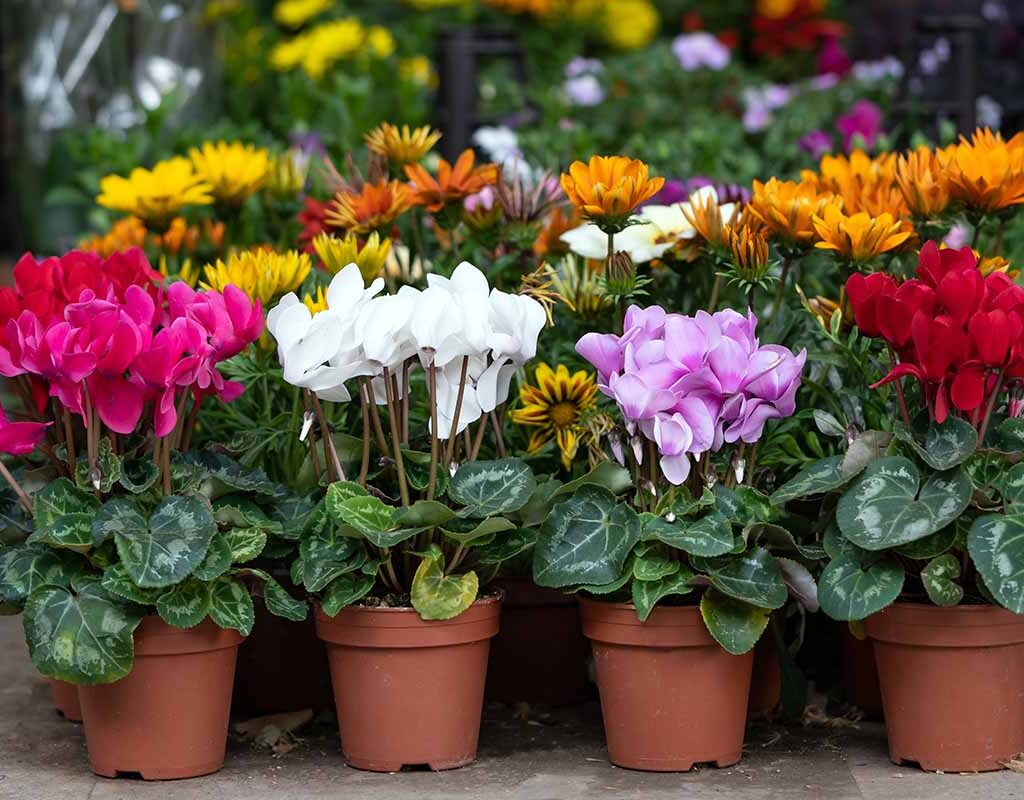
Known for their vibrant foliage, Heucheras, or Coral Bells, are shade garden favorites. Their leaves come in stunning hues of burgundy, lime, caramel, and even silver, giving a bold pop of color in dim areas.
Why Heucheras Work in Shade:
- Their main feature is the foliage, not flowers, so they look fantastic throughout the growing season.
- They’re compact and work well as edging plants or accents in mixed beds.
Planting & Care Tips:
- Light: Partial shade to full shade (some varieties tolerate sun).
- Soil: Well-drained soil; they dislike soggy conditions.
- Watering: Moderate watering; allow topsoil to dry slightly between sessions.
- Maintenance: Trim back dead foliage in spring and mulch lightly to protect roots.
Bonus Feature:
In summer, delicate flower stalks rise above the foliage, attracting pollinators like hummingbirds and bees.
5. Ferns – The Timeless Shade Classics
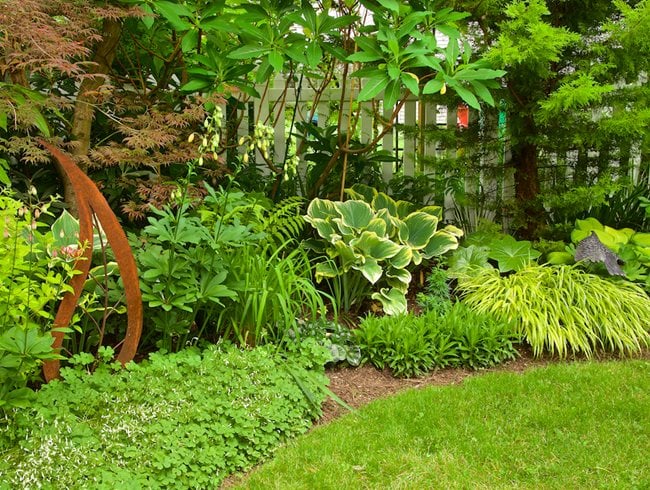
Ferns are among the oldest plants on Earth, and they remain a timeless choice for shady gardens. Their airy, green fronds soften hardscapes and create a natural woodland aesthetic.
Why Ferns Work in Shade:
- They thrive in deep shade where many flowering plants struggle.
- Their unique textures add elegance and depth.
Planting & Care Tips:
- Light: Full to partial shade.
- Soil: Moist, rich soil with plenty of organic matter.
- Watering: Keep soil evenly moist, especially during summer heat.
- Maintenance: Trim back old fronds in spring to make way for new growth.
Bonus Feature:
Mixing different fern varieties (like maidenhair, ostrich, or Japanese painted fern) creates visual variety without relying on blooms.
Design Tips for Shady Corners
Transforming gloomy spaces into garden highlights requires more than just picking the right plants. Here are some design tips to maximize the beauty of your shade perennials:
- Layer Heights – Use tall plants like astilbes or ferns in the back, medium-sized hostas in the middle, and smaller heucheras at the front for depth.
- Mix Textures – Combine bold leaves of hostas with airy fern fronds for a balanced look.
- Add Pops of Color – Choose perennials like bleeding hearts or coral bells to introduce seasonal hues.
- Use Pathways & Borders – Frame shade gardens with stone or wood to give them structure.
- Embrace Natural Style – Shade gardens often look best when mimicking woodland designs, with a slightly informal feel.
Caring for Shade Perennials: General Guidelines
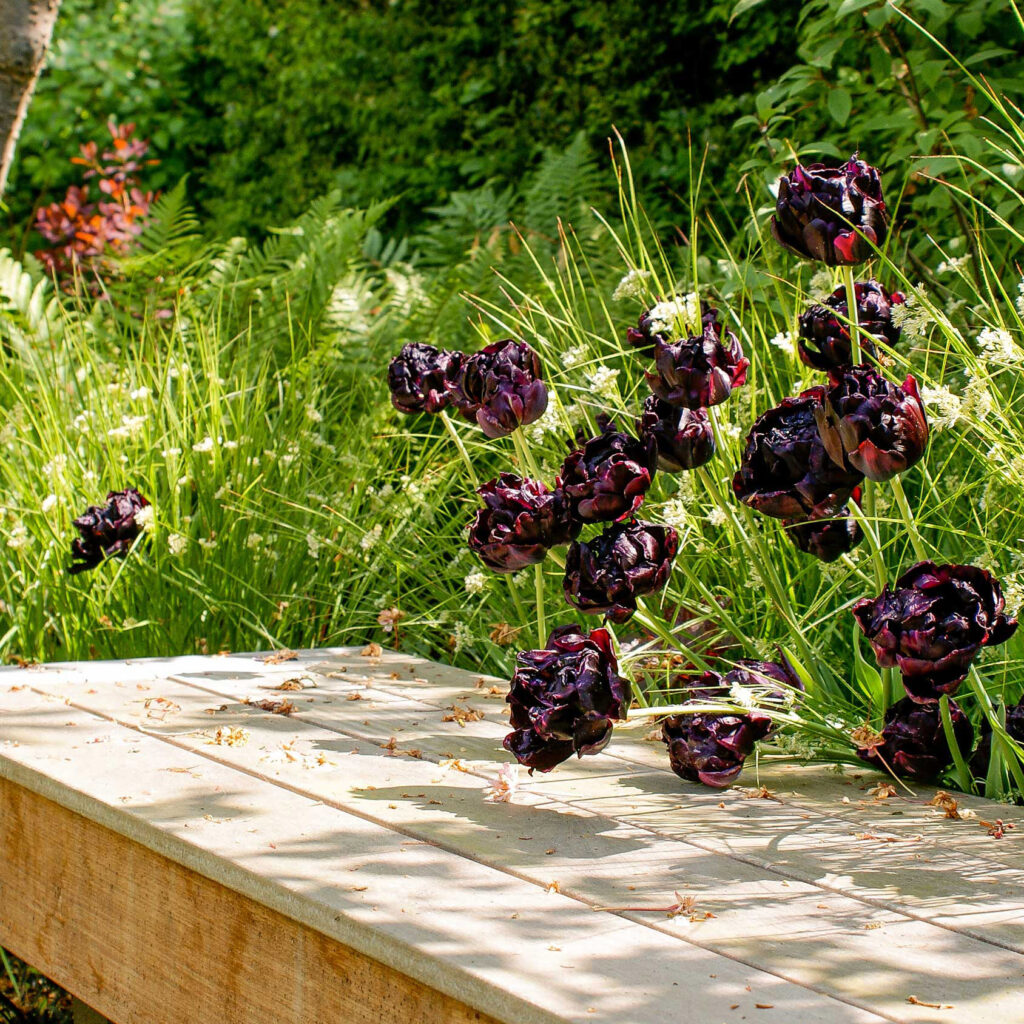
Although each plant has its own needs, some universal care tips will keep your shade-friendly perennials thriving:
- Soil Preparation: Add compost or leaf mold before planting to enrich soil.
- Mulching: Use organic mulch to retain moisture and suppress weeds.
- Fertilizing: Apply a balanced, slow-release fertilizer in spring.
- Watering: Shade often means cooler soil, but don’t assume water isn’t needed—check moisture regularly.
- Dividing: Many perennials benefit from division every few years to prevent overcrowding and encourage stronger growth.
Conclusion
Shady corners no longer need to be problem areas in your garden. By planting Hostas, Astilbes, Bleeding Hearts, Heucheras, and Ferns, you can brighten dim spaces with vibrant foliage, charming blooms, and unique textures. These shade-friendly perennials are not only beautiful but also reliable, coming back year after year with minimal fuss.
With thoughtful planting and design, your once-neglected shady spots can become the most enchanting and refreshing areas of your outdoor space. Instead of gloom, you’ll enjoy a vibrant, layered oasis that feels alive every season.
